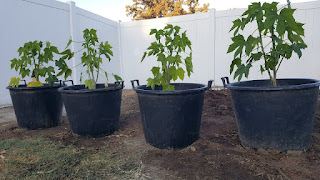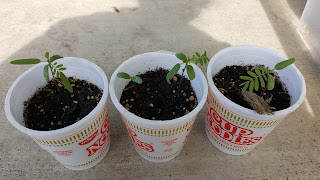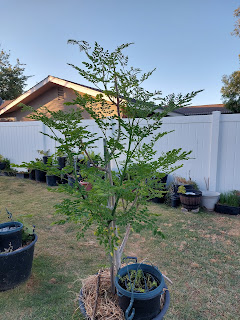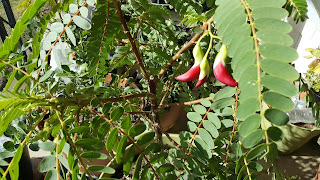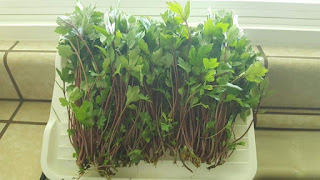ស្លឹកងុប or Star Gooseberry (Sauropus Androgynus)
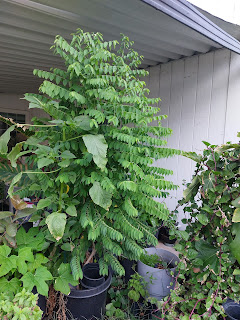
(Sauropus Androgynus) or ស្លឹកងុប can be propagated by cutting or seeds. A lso known as Sweet Leaf, Katuk, and Star Gooseberry. It is an essential accent ingredient in some traditional Khmer cooking. Used in Soups, stir fry, or a quick blanched used for side dish in dipping sauce/pastes (Khmer Pesto). A native to Cambodia. It is a South East Asian indigenous food source. A perennial in a tropical, but tender subtropical climate. It's sensitive to frost. Need protection from frost, and afternoons sun here at USDA zone 9b. It's an erected shrubs. It's a flaccid and have cylindrical branches. It bears male and flowers. Aeration and pruning regularly to encourage new roots and shoots. Sauropus Androgynus is rich in vitamin A & E, providing more than 100% of the daily value per 100 g serving. It's also a source of minerals. 6-10-19 3 weeks germination

